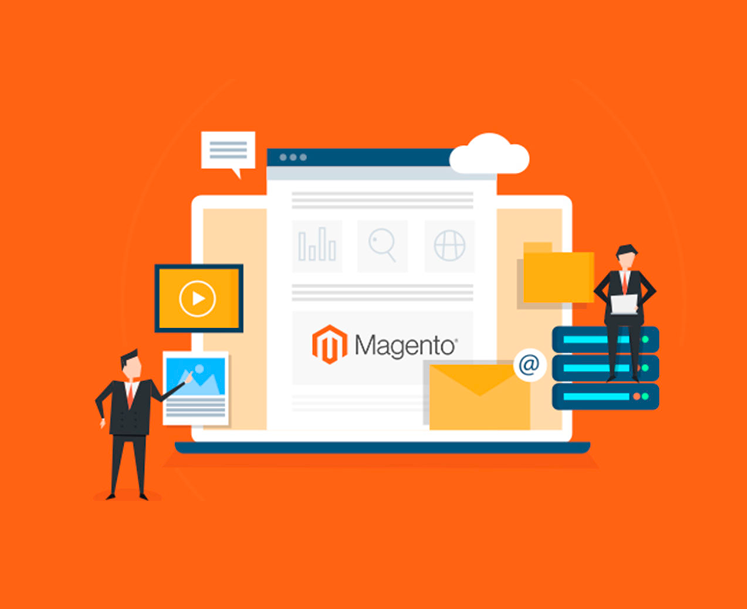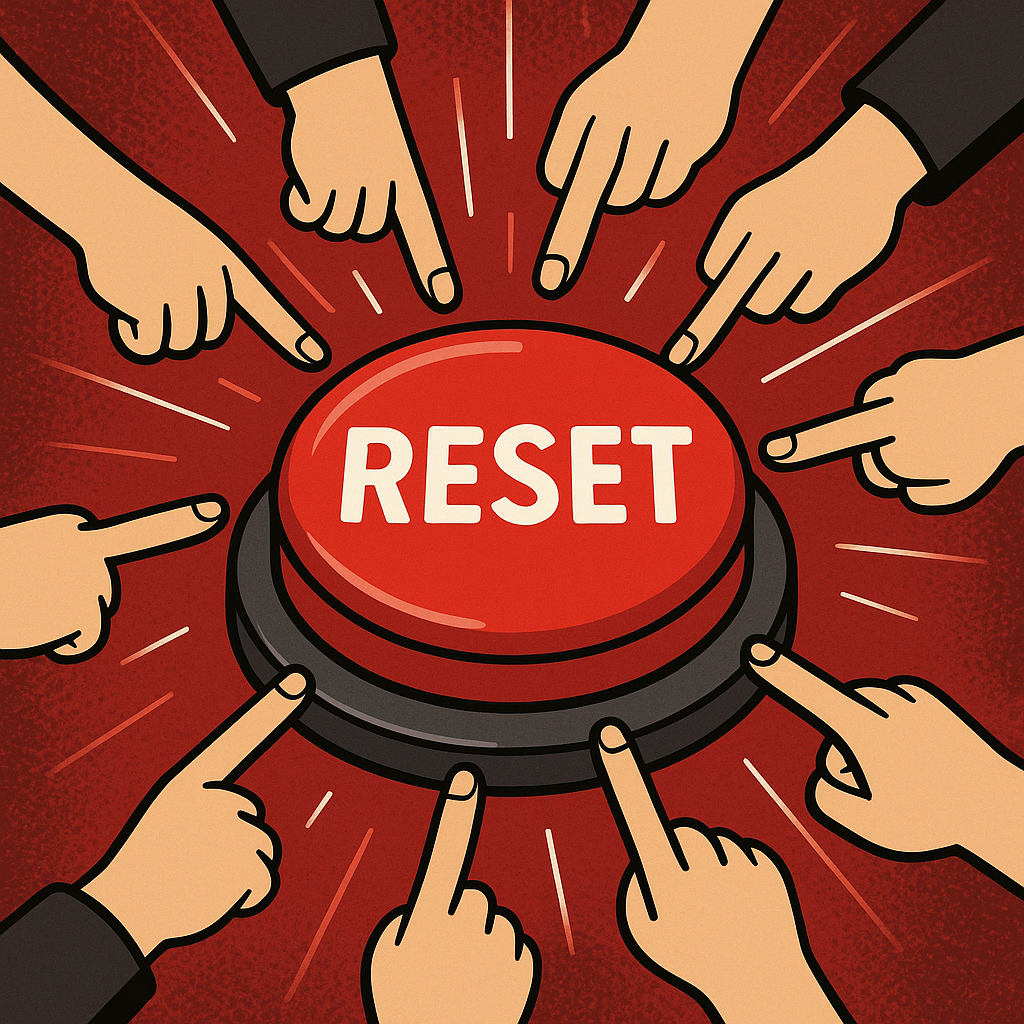As we edge closer to a global economic downturn, businesses worldwide are bracing for impact. It is here that one particular determinant of success takes center stage - speed. More specifically, website speed.
In today's digitally-driven world, a business's online presence is as crucial as its physical one. This presence is often encapsulated within a website where potential customers can learn about the business, engage with its content, and ultimately make purchases. In this context, speed becomes paramount. A website's loading time can shape a visitor's first impression, influence their engagement, and impact their likelihood to convert into a customer.
In this article, we'll delve into the necessity of speed in preparing your business to navigate and stand out amidst an economic downturn. We'll uncover how it affects search rankings, its implications on conversion rates, and explore real-world success stories that reinforce the critical role of website speed.
The Need for Speed
In a world where digital content is consumed rapidly and constantly, website speed has become non-negotiable. Speed, in the context of a website, refers to how quickly users can see and interact with content. A delay measured in milliseconds can have a detrimental effect on user engagement, conversion rates, and customer retention.
Why does speed matter so much? The answer lies in our increasingly short attention spans and the desire for instant gratification. In an era of high-speed internet and swift digital interactions, users have come to expect quick, seamless online experiences. A slow website can frustrate users, prompting them to abandon the site and likely deter them from returning.
But the importance of speed extends beyond user experience. It also plays a pivotal role in how search engines, like Google, rank your website. As businesses strive for visibility and relevance in a crowded digital landscape, especially during an economic downturn, optimising website speed can be a game-changing strategy.
Correlation with Search Rankings
The relationship between website speed and search rankings is backed by solid research and reinforced by statements from search engine giants like Google. A few years ago, Google announced that the speed of web pages would be a factor in determining their ranking. This change reflected Google's commitment to ensuring users find the most relevant and user-friendly pages.
So, how does speed affect rankings? Websites that meet all of Google's requirements enjoy a slight advantage, ranking one percentage point higher than the average. These requirements encompass various elements, from the relevance and quality of content to mobile-friendliness and, of course, page speed.
On the flip side, websites that fail to meet at least one of Google's requirements can find themselves at a significant disadvantage, ranking 3.7 percentage points lower. This underlines the potentially damaging impact of a slow website on your visibility in search results.
Further emphasizing the importance of speed, Google's Core Web Vitals have become a measurable and relevant factor in search rankings. These vitals, which measure aspects of page speed and user experience, highlight how speed and SEO ( Search Engine Optimisation) have become intertwined.
A study by Crystallize further validated the correlation between speed and SEO. In their experiment with page speed score, they observed that a page with a high score (indicating fast speed) ranked #1 in Google with a featured snippet for the optimised item. Meanwhile, unoptimised pages with lower speed scores did not appear in search results.
In conclusion, optimising your website speed can significantly enhance your search rankings, giving you a crucial edge over competitors. Especially in an economic downturn where every advantage counts, speed can be the determining factor between stagnation and growth.
Conversion Impact of Speed
As the internet continues to evolve, the correlation between website speed and conversion rates has become more evident. The impact of a slight increase in page loading speed on conversions can be profound, as demonstrated in Deloitte's ' Milliseconds Make Millions' report.
This study examined the impact of a mere 0.1 second decrease in loading time across different market sectors and the results were astonishing. In the retail market, a quicker page loading time led to an 8.4% rise in conversion rates and a 9.2% improvement in average shopping basket size. The travel sector saw a significant 10.1% increase in conversion rates and a 1.9% rise in average basket size. For luxury brands, faster loading times resulted in an 8.6% increase in page views per session and an 8.3% decrease in form bounce rates.
This trend is also supported by real-world examples from Peakhour's own clients. Pharmacy Direct, for example, reported a significant 30% increase in conversions and order value upon reducing their page load time by 90%. Similarly, Kitchen Warehouse saw a staggering 150% increase in revenue when they managed to decrease their page load times by 70%.
These numbers demonstrate the indisputable link between page speed and key business metrics. By optimising speed, businesses can enjoy substantial improvements in conversions and other crucial aspects, no matter the industry.
Real-Life Success Stories
The effects of website speed optimisation aren't just theoretical. Many businesses have already reaped the rewards of prioritising speed, as these success stories demonstrate:
- French linen brand Carré Blanc saw a whopping 25% increase in conversion rates after improving web page loading speed.
- Auto giant Renault optimised the Largest Contentful Paint (LCP), leading to a 14 percentage point decrease in bounce rate and a 13% rise in conversions.
- E-commerce platform eBay found that every 100ms improvement in search page loading time resulted in a 0.5% increase in additions to the shopping cart.
- SnipesUSA.com managed to double their average conversion rate from about 1% to about 2% by decreasing load times by 30%.
- French toy retailer King Jouet enjoyed a 5% increase in conversion rates within a month through page speed optimisation.
- AliExpress, a global online retail marketplace, experienced a 10.5% increase in orders and a 27% increase in conversions for new customers by reducing loading time by 36%.
- Boutique designer brand Revelry saw a 43% faster page loading, 8% decrease in bounce rates, and 30% increase in conversions after optimising images on their eCommerce site.
- Zalando, an online fashion platform, reported a revenue increase of 0.7% per session by reducing web page loading time by 100ms.
- Pinterest observed a 15% increase in platform registrations following an improvement in loading speed.
- Telecommunications company Vodafone saw an 8% sales increase with a 31% improvement in Largest Contentful Paint ( LCP).
- Mobile marketplace Swappie achieved an impressive 42% increase in mobile revenue by focusing on Core Web Vitals.
These success stories demonstrate how improving loading speed can significantly boost conversion rates, reinforcing the critical role of speed in business success.
Optimising for Search Performance
Prioritising website speed is also crucial in optimising search performance. Several success stories attest to this:
- Lever Interactive Agency reported that one of their clients improved their Quality Score, resulting in a 17% decrease in Cost Per Click (CPC), a 31% decrease in Cost Per Acquisition (CPA), and a 20% increase in conversion rate on faster landing pages.
- Crystallize Headless Commerce noted that scoring high in the Quality Score can lead to significant benefits, including up to a 50% discount on CPC prices. Conversely, a low Quality Score can result in paying up to 400% extra, severely impacting your marketing budget.
Core Web Vitals has become a priority for eCommerce platform Shopify. The company is continuously optimising speed performance to improve search rankings.
These cases exemplify the profound impact of website speed on search performance and the importance of continually optimising your site for improved results.
Enhancing Engagement
User engagement is a crucial metric for website success. A speedy, efficient, and well-optimised site offers a better user experience and is more likely to hold a visitor's attention, leading to longer sessions and higher interaction levels. The data supports this conclusion in a range of ways.
Take eCommerce for instance. Customers are 10% more likely to recommend an eCommerce website if its pages load in 13 to 10 seconds. Moreover, the likelihood of recommendation jumps to a considerable 26% if the loading time is reduced to just 3 seconds. This statistic demonstrates how users perceive website speed and how it influences their willingness to recommend a site to others.
Other prominent companies have also seen positive effects from speed optimisation. Netflix implemented Gzip compression for resource optimisation, resulting in a substantial 43% reduction in outbound traffic. Meanwhile, Yahoo Japan News saw increases in both page views per session and session times (15% and 13% respectively), as well as a 1.72% decrease in bounce rate, by improving their Cumulative Layout Shift (CLS) by 0.2 points.
The influence of good Core Web Vitals on user engagement has also been shown in studies by Google. Their data revealed that favourable Core Web Vitals scores can reduce the likelihood of users abandoning a page before it loads by up to 24%. Similarly, meeting Core Web Vitals thresholds led to an overall 43% improvement in bounce rate for The Economic Times.
The agriculture e-commerce platform, Agrofy, significantly improved their Core Web Vitals scores (70% for LCP and 72% for CLS), resulting in a remarkable 76% reduction in abandonment rate. This improvement again underscores how website speed optimisation can significantly enhance user engagement.
Key Speed Metrics
Website speed is about more than just how quickly a page fully loads. Several key metrics help gauge the overall speed and performance of a website. Google's Pagespeed Insights lists the following important metrics:
-
Largest Contentful Paint (LCP) measures the time taken to load the largest visible content on the page. The ideal target for this is less than 2.5 seconds. This metric is crucial because it provides a clear indicator of perceived load speed for the user.
-
Cumulative Layout Shift (CLS) evaluates the visual stability of a page during loading. The target here is less than 0.1. This is to ensure minimal jumping or shifting of content on the page, providing a smoother user experience.
-
First Input Delay determines how quickly a page responds to user input, with the target being less than 0.1 seconds. This metric measures the interactivity and responsiveness of a website.
These metrics play a significant role in ensuring your website delivers a fast, smooth user experience, leading to improved overall performance.
User Expectations and Impact on Business
In an age where digital interactions are becoming increasingly crucial, the importance of meeting user expectations cannot be overstated. Among these expectations, website speed stands out as particularly important.
According to Think with Google, slow-loading pages can significantly impact the user experience, resulting in higher bounce rates, negative brand perception, and a noticeable impact on conversions and revenue. Simply put, when users have to wait too long for a webpage to load, they're likely to leave and seek out a faster, more satisfying experience elsewhere.
This sentiment is backed by research from industry leaders. Digital marketing expert Neil Patel highlights that a 1-second delay in page response can lead to a 7% reduction in conversions. To put that into perspective, if an e-commerce site is making $100,000 per day, a 1-second page delay could potentially cost $2.5 million in lost sales every year.
Another illuminating study from Akamai revealed that 53% of mobile site visitors will leave a page that takes longer than three seconds to load. This demonstrates the high standards modern users have for website performance and the potential revenue losses businesses can suffer if they fail to meet these expectations.
Common Culprits
If your website is running slowly, a few common issues could be to blame. It's crucial to identify these and address them appropriately to achieve optimal loading speed and performance.
-
Time to First Byte (TTFB) is the time it takes for the first byte of data to be received from the server. High TTFB can significantly impact loading times and should be minimised.
-
Large Page Size and Resources can also contribute to slow loading times. This includes heavy content, such as images, videos, or large files. Optimising these resources can drastically improve loading speed.
-
Third-Party Resources like ads, plugins, or widgets can require additional loading time. While these are often necessary, it's essential to manage them effectively to avoid excessive loading delays.
-
Javascript can be a double-edged sword. While it enables advanced functionalities, complex or poorly optimised JavaScript code can also hinder performance.
-
Single-Page Applications (SPAs) may experience slower initial loading due to their extensive scripting requirements, but they often offer faster navigation once loaded.
-
Busy Servers Handling Bot Traffic can also cause slowdowns. Bot traffic, in some instances, can account for over 40% of server load. Managing this effectively can help improve website speed.
By understanding these factors, you can identify the reasons behind your slow website speed and take appropriate measures to enhance your website's performance.
Continuous Monitoring and Performance Optimisation
Just as important as getting your website speed up to par is maintaining and continually improving it. This is where ongoing monitoring and performance optimisation come into play.
With tools such as Google's Pagespeed Insights and various others available, there's no shortage of resources to help you keep an eye on your website's performance. Regularly checking your site's key metrics can help you identify any issues that may be slowing your site down. You can then make the necessary changes to ensure your site continues to perform optimally.
A crucial aspect of this is performing tests and making improvements on a staging website first, ensuring changes won't disrupt your live site's performance or user experience. Regularly running diagnostic tools can identify any issues, and iterative improvements can ensure your site stays up-to-date with best practices.
As SEO consulting company Moz highlights, focusing on continuous performance optimisation can have significant benefits. Not only does it help maintain a speedy, user-friendly site, but it can also lead to higher search rankings, better user engagement, and ultimately, increased conversions and revenue.
Preparing for the Coming Recession
With an economic downturn on the horizon, having a speedy, well-optimised website is more critical than ever. Consumers are likely to become more selective with their spending, and businesses will need to compete more fiercely for every sale.
A fast, efficient website can be a key differentiator in this competitive environment. It can boost your search rankings, making your site more visible to potential customers. It can improve user engagement, encouraging visitors to spend more time on your site, view more pages, and be more likely to make a purchase. And, perhaps most importantly, it can increase your conversion rates, directly leading to more sales.
In this context, website speed is not just a nice-to-have. It's a critical business necessity. Now is the time to get your website up to speed, so you're ready to stand out and succeed in the coming recession. Don't let your website be left in the dust - take the necessary steps to maximise your website speed and prepare your business for the challenges ahead.
With the wealth of data available showing the clear benefits of speed optimisation, coupled with numerous real-life success stories, it's clear that investing in website speed is a prudent business decision. It's about understanding your user's expectations and meeting them head-on, ensuring your website isn't just a platform but a robust, effective tool in your business arsenal.
We've unpacked the importance of website speed, detailed key speed metrics, discussed common causes of slow website performance, and highlighted the need for continuous monitoring and performance optimisation. It's now up to you to apply this knowledge and ensure your website stands ready to meet the challenges of the future.







